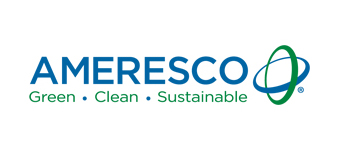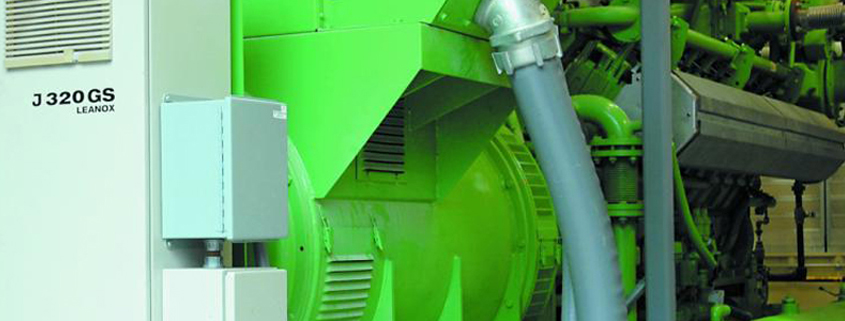CHP and District Heating
CHP (also known as Cogeneration or combined heat and power) is essentially an extremely efficient way of generating local power for your site. As a form of on-site or distributed energy, its proximity allows several advantages:
Combine for carbon and energy reductions
Stop wasting heat when generating power and improve overall efficiency.
- It gives extra security of supply, enabling sites to ride through brownouts
- It displaces aging and inefficient boiler plant
- The heat generated as a by-product can be recovered and usefully used onsite as Steam or Hot Water, displacing fuel used for heating.
- Network losses are avoided, making the electricity the most efficient available
- The power generated avoids DUoS, TNUoS, Triads, Peak charges, etc.
- The fuel it uses avoids a number of taxes like the CCL
- It can enable the site to gain CRC, EU-ETS and RO/FiT incentives
If you have relatively low fuel costs, and comparatively high electricity costs, it is said that you have a good ‘spark spread’; good news for CHP. As the cost of electricity rises, mainly through various non-commodity costs like RO, FiT, CCL, CPS, Capacity Mechanism, EDR, etc. and as gas prices continue to remain stable, this difference looks set to become generally better for everyone, making the paybacks of CHP projects look better and better.
At Ameresco we have the knowledge and expertise to correctly specify and size a CHP for your particular application. If you believe you have a CHP application, if you have a consistent heating load and a good spark spread, please give us a call today, and start seeing the benefits of CHP.
Interlinked with the subject of CHP is that of District Heating and Energy Networks.
District Heating (and Cooling) is fundamentally technology agnostic. Connecting and aggregating multiple heating load sources togetheroften makes simple economic sense, irrespective of the heat source at the heart of the network. Overlaying different heating profiles means a singular, more consistent, more stable and larger heating load. A hospital, a datacentre, a school, a housing complex, an industrial site… having a common heating main has distinct advantages:
- There is no longer a requirement to supply gas to the individual sites, an important safety factor. This also reduces the need for gas checks – an expensive operational cost for a council estate, for example.
- The operational cost of maintaining multiple boiler systems is reduced as the maintenance lies with the central heating plant. It’s simply cheaper.
- Operationally you are billing for heat, not for fuel: a significant difference.
- Efficiency increases as the heat source becomes larger: a 2MW boiler is more efficient than 20 x 100kW boilers. You simply use less fuel.
- The energy can originate from a waste-heat source, allowing the heat to become far cheaper than would otherwise be possible. The fuel you do use is very inexpensive or effectively ‘free’.
- DH Networks can connect Energy Sources like industrial complexes and Waste incineration plants with excess heat, to Energy load centres like housing miles away, sites that have a useful use for that heat. Running several miles underground these network systems of pipes can lose as little as one degree centigrade per mile, ensuring the energy wasted is economically negligible.
At Ameresco we have the knowledge and expertise to design a district heating network that benefits you and your neighbours, ensuring you collectively benefit, regardless of the energy centre type.
The heat source at the heart of the energy centre heating network can be any one of a number of technologies: a Biomass Boiler, an incinerator Waste-Heat boiler, a Gas CHP. However, from an economic standpoint, as electricity prices rise it is becoming more and more common to incorporate a CHP system at the heart of the district heating network and thereby maximise the efficiency of the system. The fuel source for this CHP can vary: it can be virgin or waste biomass, or natural gas, anaerobic digester gas, synthetic gas or landfill gas, bringing advantages of its own to the table.
If you know of a heat load nearby, or a heat source being vented to atmosphere, we can make a project happen. Stop the waste. Recover the energy and start saving money.

